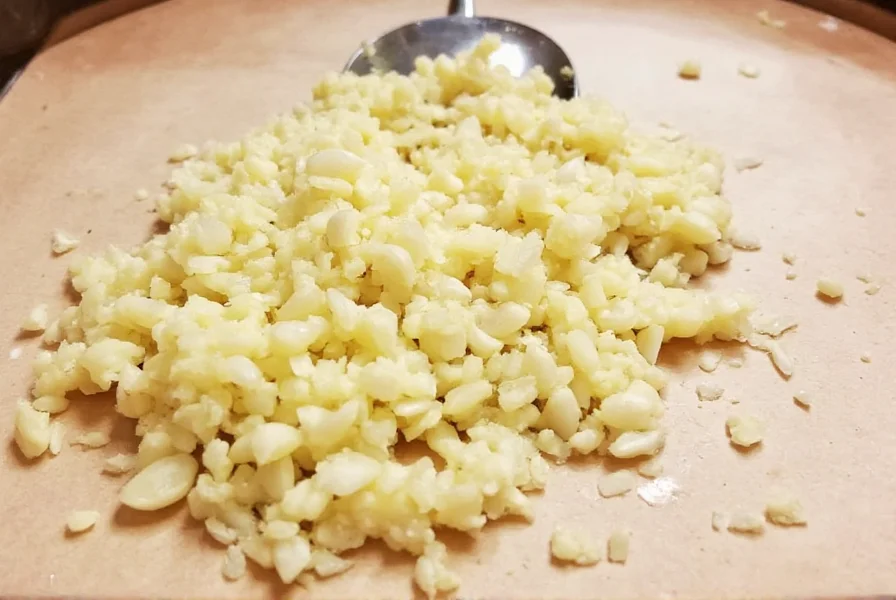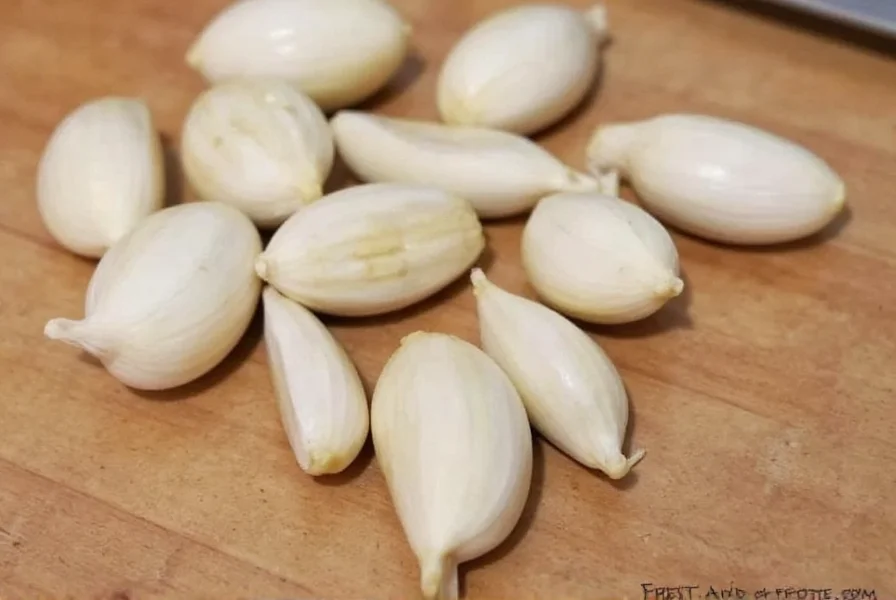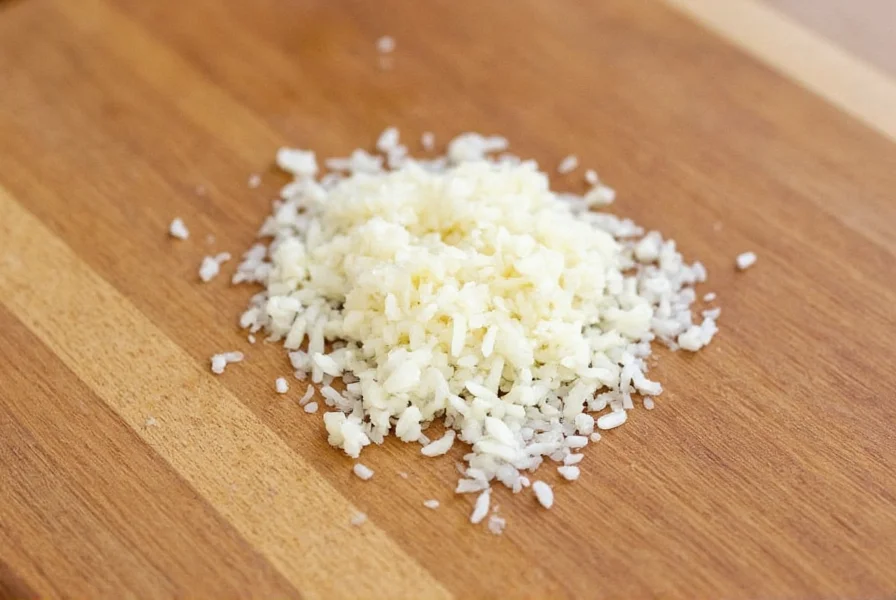Understanding garlic measurements prevents cooking mishaps and guarantees consistent flavor in your dishes. When converting whole cloves to minced form, several factors affect the final volume including garlic variety, freshness, and mincing technique. This guide provides professional kitchen insights for accurate conversions every time.
Garlic Conversion Fundamentals
Professional chefs and home cooks alike need reliable measurements when working with garlic. The standard conversion assumes medium-sized cloves (about 1 inch long and ¾ inch in diameter) with tight skins and firm texture. Freshness matters—older garlic contains less moisture and yields slightly less minced volume than plump, newly harvested bulbs.
| Garlic Cloves | Minced Volume (Teaspoons) | Minced Volume (Milliliters) | Weight (Grams) |
|---|---|---|---|
| 1 small clove | 3/8 tsp | 1.9 ml | 2.5 g |
| 1 medium clove | 1/2 tsp | 2.5 ml | 3.3 g |
| 1 large clove | 5/8 tsp | 3.1 ml | 4.2 g |
| 4 medium cloves | 2 tsp | 10 ml | 13.2 g |
Factors Affecting Garlic Measurements
Clove size variation creates the most significant measurement differences. Grocery store garlic typically falls into three categories:
- Small cloves (from multi-clove varieties): Yield 0.35-0.45 teaspoons per clove
- Medium cloves (standard supermarket garlic): Yield 0.45-0.55 teaspoons per clove
- Large cloves (elephant or solo garlic): Yield 0.6-0.8 teaspoons per clove
Mincing technique also impacts volume. Hand-minced garlic with a chef's knife typically yields 10-15% more volume than food processor minced due to cell structure preservation. For the most accurate measurements, always mince garlic before measuring rather than estimating from whole cloves.

Practical Kitchen Measurement Techniques
When recipe precision matters, use these professional methods:
- Water displacement method: Fill a graduated cylinder with water, add minced garlic, and measure the displaced volume
- Weight-based conversion: Use a kitchen scale (13.2 grams for 4 medium cloves)
- Teaspoon leveling: For small quantities, mound minced garlic in a measuring spoon then level with a straight edge
When substituting jarred minced garlic, remember that commercial products often contain citric acid or oil that affects volume. Two teaspoons of fresh minced garlic equals approximately 2¼ teaspoons of jarred product due to added liquid content.
Storage and Freshness Considerations
Freshly minced garlic loses potency rapidly. For best flavor preservation:
- Use within 20 minutes for maximum allicin content
- Store unused minced garlic in an airtight container with a thin oil layer
- Refrigerate for up to 3 days (flavor diminishes by 15% daily)
- Freeze in ice cube trays for longer storage (up to 3 months)

Recipe Application Guidelines
Understanding how much minced garlic equals 4 cloves helps adapt recipes successfully. In delicate dishes like salad dressings or fish preparations, use the lower end of the measurement range (1¾ teaspoons). For robust applications like tomato sauces or meat marinades, use the full 2 teaspoons. When doubling recipes, remember that garlic flavor compounds don't scale linearly—increase quantity by only 1.7x to avoid overpowering dishes.
Professional chefs recommend tasting as you go when working with garlic conversions. The ideal amount depends on your specific garlic variety, cooking method, and personal preference. Always start with less—you can add more garlic during cooking, but you can't remove it once incorporated.
How many tablespoons is 4 cloves of minced garlic?
Four medium garlic cloves equal approximately 2/3 tablespoon (0.67 tbsp) of minced garlic. Since 3 teaspoons make 1 tablespoon, and 4 cloves yield 2 teaspoons, the precise conversion is 0.67 tablespoons. For small cloves, expect about 0.53 tablespoons; for large cloves, approximately 0.83 tablespoons.
Can I substitute garlic powder for 4 cloves of fresh garlic?
Yes, but use precise measurements. Substitute 1/2 teaspoon garlic powder for 4 fresh cloves. Remember that garlic powder has concentrated flavor, so start with 3/8 teaspoon and adjust to taste. Reconstitute powder with 1/2 teaspoon water to mimic fresh garlic's moisture content when possible.
Why does my minced garlic measurement differ from recipe instructions?
Measurement discrepancies occur due to clove size variations, mincing technique, and garlic freshness. Commercial recipes often use standardized medium cloves, while home cooks encounter size variations. Always consider your specific garlic characteristics when following recipes requiring 4 garlic cloves to minced conversions.
How do I measure minced garlic without measuring spoons?
Use household objects for approximate measurements: the tip of your index finger equals about 1 teaspoon, a quarter coin measures approximately 1 inch in diameter (useful for mounding), and the hollow of your palm can hold roughly 2 teaspoons of minced garlic. For critical recipes, invest in a small kitchen scale for gram measurements.
Does roasting garlic change the minced measurement?
Yes, roasting reduces garlic volume by 25-30% due to moisture loss. Four roasted medium cloves yield approximately 1¼-1½ teaspoons minced. Roasted garlic also has a softer texture, so press rather than mince for proper measurement. Account for this reduction when converting recipes that call for raw minced garlic.











 浙公网安备
33010002000092号
浙公网安备
33010002000092号 浙B2-20120091-4
浙B2-20120091-4